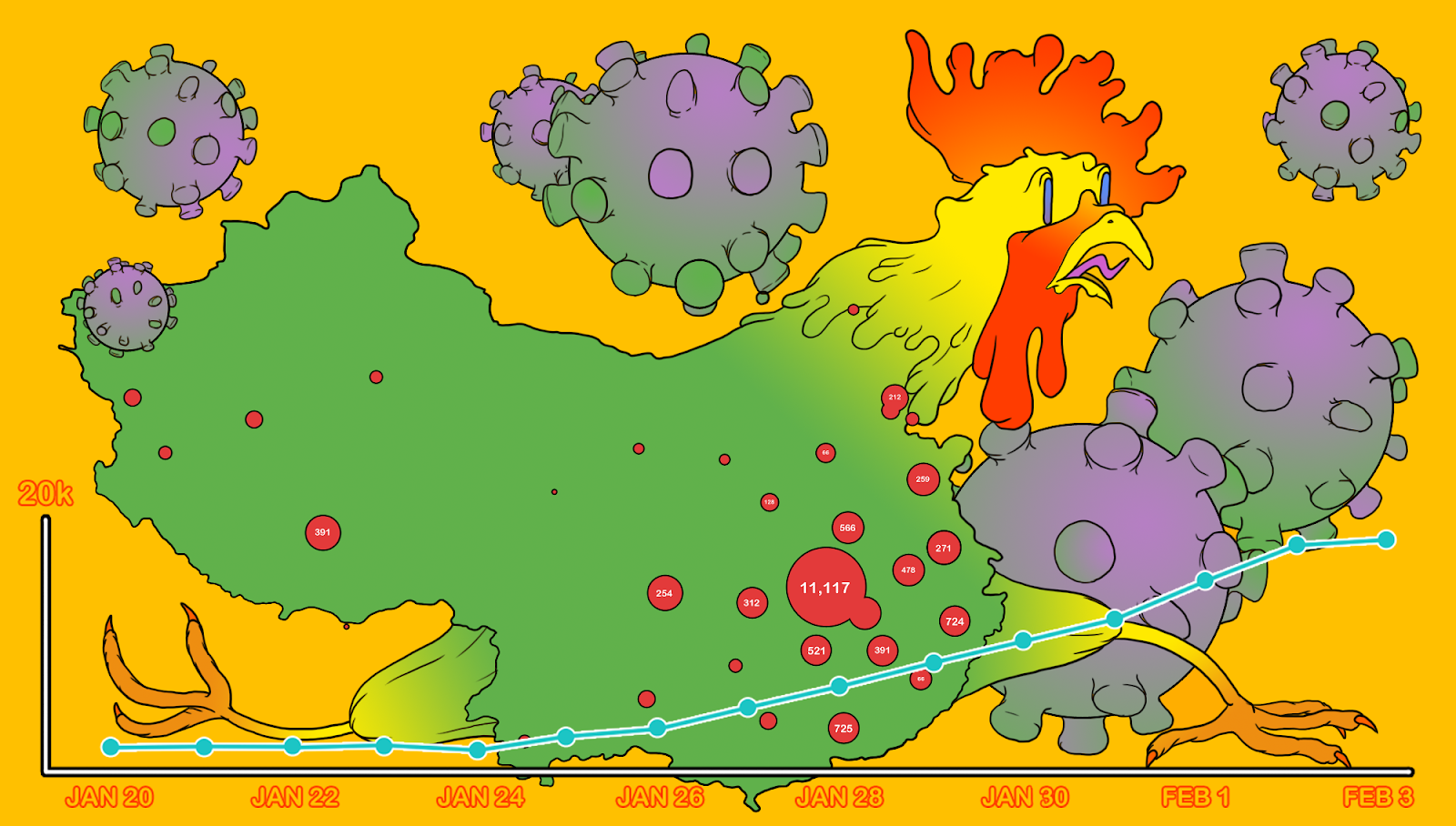What you need to know about the coronavirus epidemic


Photo credit: The China Project illustration by Derek Zheng.
After the World Health Organization’s declaration last Thursday that the 2019-nCoV outbreak originating in Wuhan, China, is a public health emergency, it feels like the entire world is preparing for a pandemic.
- As much as 80 percent of China’s economy remains shut this week, as at least 24 provinces, cities, and regional governments in China have extended the Lunar New Year holiday through February 10, according to CNBC.
- The first coronavirus death outside of China was reported in the Philippines, per the New York Times, as the total fatality count within China surged to 361, surpassing the 2003 SARS outbreak.
- “Dozens of countries” have put up travel bans, many following the lead of the U.S., limiting immigration across their borders to citizens only to contain the spread of the virus, Bloomberg reports via the SCMP. Singapore, Indonesia, the Philippines, Australia, New Zealand, India, the Maldives, North Korea, Mongolia, Papua New Guinea, and Israel are among those with the strictest bans on entry by non-citizens.
- Many more countries have put in place severe restrictions that fall short of a total ban, and nearly 10,000 flights from more than 20 airlines have been canceled in the past month, slowing cross-border migration with China to a trickle.
- No one is listening to the World Health Organization, which has repeatedly advised against extreme travel bans to deal with the spread of the coronavirus.
- Chinese financial markets saw a marked drop on Monday as they reopened after the Lunar New Year holiday break.
- “Officials of some of the world’s largest oil producers are scrambling to stem a sharp fall in prices over concerns that the growing coronavirus epidemic will hit demand from China, the biggest importer,” the New York Times reports.
DON’T PANIC
While the current death toll of the coronavirus, 361 in China and 1 outside of China, is a tragedy and may seem alarming, it is actually a small amount compared with the total infected, which is over 17,000. There are other encouraging signs from the data, at least as it has been officially reported, per the New York Times:
Health experts say they are encouraged by the steady rise in the number of recoveries. They take it as evidence that the treatments meted out have been effective and that the virus does not appear to be as deadly as SARS.
Of course, skepticism needs to be applied to official data, especially because testing kits for the coronavirus are reportedly in short supply in Wuhan, meaning there could be significant numbers of undiagnosed or unreported cases skewing the data, the SCMP reports.
But if you are in the U.S. — or in many places outside of China — your “risk of catching flu is exponentially higher than catching the novel coronavirus,” Michael Ison, an infectious disease physician at Northwestern University, told NPR. Washing your hands remains the single best thing to do to remain safe against a variety of infectious illnesses, including the coronavirus and the flu.
The dire situation in Wuhan
The New York Times has written a “reconstruction of the crucial seven weeks between the appearance of the first symptoms in early December and the government’s decision to lock down the city, based on two dozen interviews with Wuhan residents, doctors and officials, on government statements and on Chinese media reports.” The comprehensive story “points to decisions that delayed a concerted public health offensive.”
The people of Wuhan are paying the price for political inaction and opacity from their leaders. See another NYT story from a reporter on the ground there: Coronavirus pummels Wuhan, a city short of supplies and overwhelmed.
The Washington Post also details political inaction that exacerbated the crisis: As coronavirus spread in critical early weeks, Chinese officials failed to raise the alarm.





